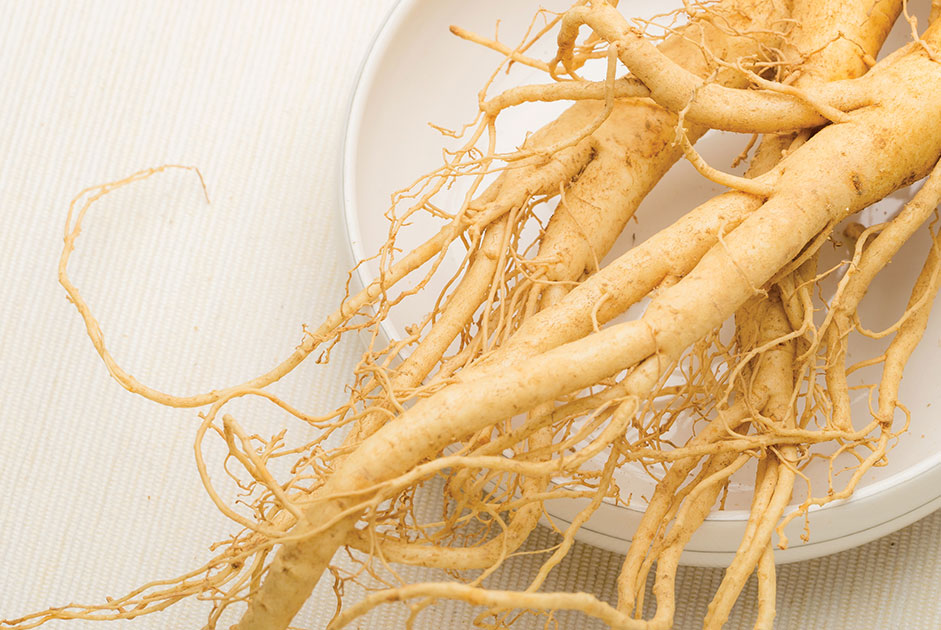BY LAUREN SEPHTON
A centuries-old, traditional Chinese medicine, grown right here in the beautiful North Carolina mountains, is being taken captive by night and admired by day.
While you may have steered away from a fairly common-looking plant on a recent hike, thinking it was the poisonous water hemlock, you may have actually just passed a bit of shining mountain gold. Ginseng grows close to the ground, as it is a root plant, but disguises itself with small, ridged leaflets and beautiful red flowers that shine when it’s ready to harvest. Ginseng roots are often described as being shaped like a man with a thick “body” and thinner leg-like roots extending from it.
Did you know that American ginseng was one of the first marketable herbs back in 1860? Originally discovered in Wisconsin, the US successfully exported 120 pounds of wild ginseng roots to China, which would redefine the American dream for many individuals. Illegally harvesting wild ginseng root became like winning a lottery ticket for sellers attracting buyers in Asian black markets. Although some US states now allow harvesting and exporting ginseng roots during specific seasons of the year, and with the necessary licenses, wild American ginseng can sell anywhere between $400 – $800 per pound. With its great popularity concentrated in Asia, you may even find an offer close to $1,000 per pound. In 2015, the ginseng industry brought in nearly $3 million in revenue.
Unlike the California Gold Rush in the mid-1800s, poachers are being drawn near to the Great Smoky Mountains, the largest fully-protected wild ginseng reserve in the USA, on the hunt for their own kind of mountain gold. With ideal ginseng plant growing conditions, poachers have brought the originally discovered 43,560 ginseng plants down to as low as 3,400 in less than a year’s time. On average, poachers are taking captive nearly 145 ginseng plants each night.
While the selling price may be high, the cost for illegal poaching is even greater. Billy Joe Hurley, a man who lived with minimal needs, sought ginseng roots as his only way out from living in a shack on his parents’ property. Nevertheless, every time he put his plans into action, he was caught and paid the price for his illegal activities. Hurley succeeded in illegally digging up more than 500 American ginseng roots that he quickly stuffed into his backpack on his fifth attempt. As he neared the park exit, he was once again confronted by park rangers who found him attempting to hide his backpack behind the hiking trail guardrail. Hurley was sentenced to six months in prison and a hefty fine, but he left devastation in the soil beyond recovery in certain parts of the national park. Although park biologists plant nearly 15,000 American ginseng roots each year, their expectations remain low as over half of them will be illegally poached by next year’s rooting.
Now you may be wondering, why are individuals willing to pay such a high price for wild ginseng root? The simplified answer can be narrowed down to one word: Ginsenosides. A unique compound with the Panax species, the genus that Ginseng belongs to. Ginsenosides have been long coveted for various medicinal qualities, such as boosting energy levels, reducing Type 2 diabetes, and preventing cancer cell growth. You may even notice these highly sought after “man roots” being carried around in the pockets of the superstitious who are just in need of some good luck!
With all assumptions of ginseng root being a “get rich quick fix” put aside, challenge yourself to spot the September blossoms of American ginseng roots on your next hike through the Great Smoky Mountains.


















